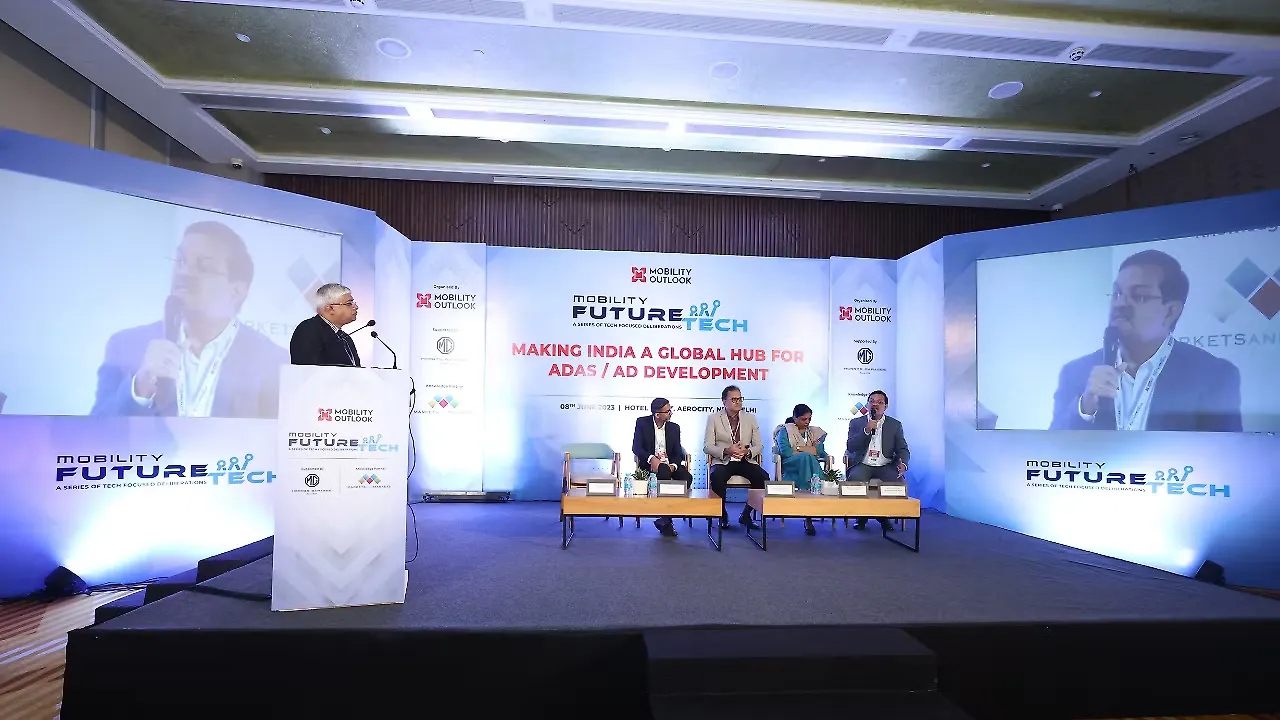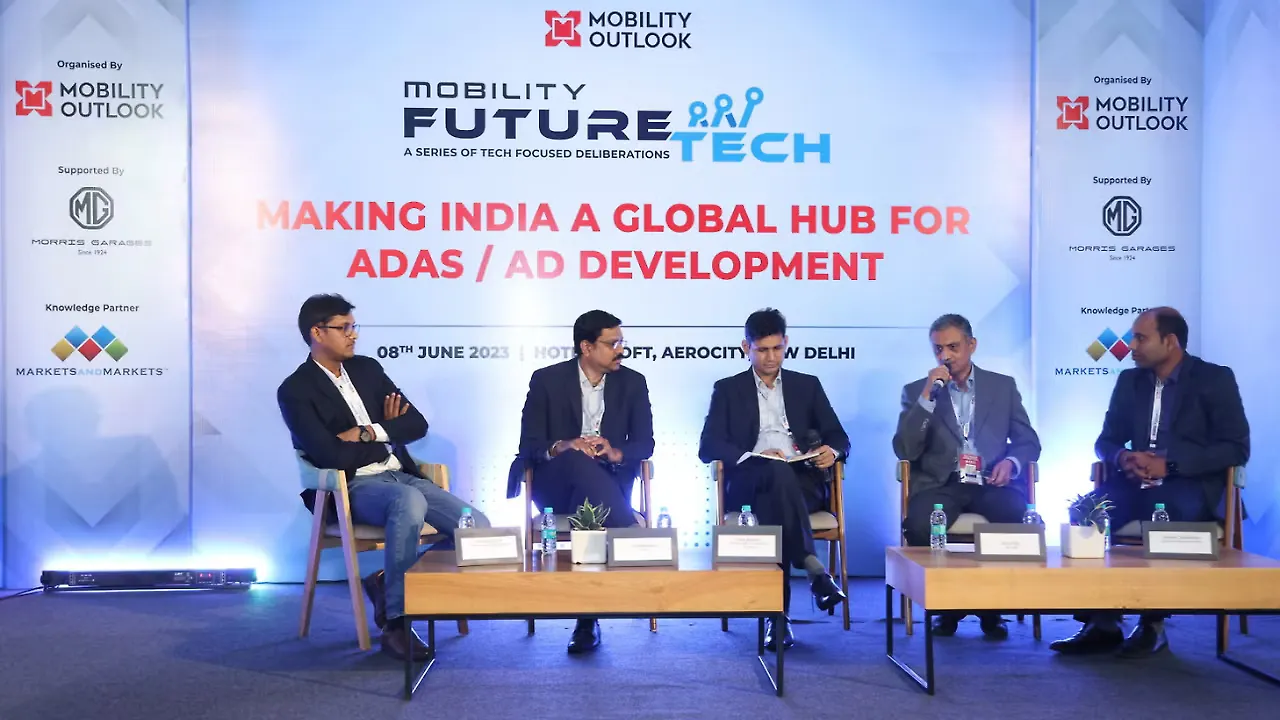
India has varied mobility spectrum – bicycle to 2ws to PVs and public transport. With just 15% of people owning vehicles - 12% 2ws and 3% 4ws, India has the maximum number of accidents, said CV Raman, CTO, Maruti Suzuki India at Mobility FutureTech organised by Mobility Outlook. Raman noted that ADAS will help in some interventions for active safety.
Subscribing to the thought, Manish Manek, VLE- Head of Programme Management, MG Motor India, said, “Of the 63.73 lakh km of roads in India only 5% is NH, however, 61% of the fatal accidents occur in these national highways.” He added that that as highways continue to grow and the rate of fatal accidents is likely to grow exponentially. Therefore, it is necessary to look at technologies to contain accidents.
He is of the view that while there are a number of challenges to road safety globally, India has unique condition leading to more challenges. Therefore, ADAS needs to be customised for Indian conditions, he added.
With Robust IT industry, India can support the automotive industry to develop innovative technologies to address these challenges. He concluded by saying that some of the companies are working on ad hoc basis but working in unison is warranted.
With Testing and evaluation of use-cases is paramount to reduce accidents, Raman added that while technology is available, we need to see the merit of it. OEMs, auto comp, government, testing agencies among others have to find solutions to reduce fatalities. Finding the right technology and then come out with regulation will help, he said.
Kaushik Madhavan, VP and Global Head- Consulting, Automotive and Transportation, MarketsAndMarkets, stated that ADAS market is set to grow up to $75 billion in the next seven years and Europe, China and the US are taking the lead in developing ADAS functionalities while the over the air update market is going to be worth $40 billion by 2030. He continued that in addition to offering safety to the end consumers, ADAS can be a revenue generator for the entire ecosystem, including telecom providers, especially in the V2X communications.

“While the adaptation of global technology is necessary and combination of multiple technologies will lead ADAS evolve faster,” Madhavan added.
From an OEM’s perspective, Mohan Savarkar, Vice President, Tata Motors Passenger Vehicles, said vehicle architecture plays a key role in offering ADAS features. During the panel discussion on Passenger Vehicles in the ADAS world – challenges and opportunities, he added that once the software defined vehicle is in place, the vehicle depreciation will become a thing of past. Today, with the vehicle getting additional features now and then, it is getting eventually depreciated.
Sathish Sundaresan, MD, India and Vice President-strategy, Elektrobit, stated that the cost associated with software, which is the differentiating and non-differentiating value of software, is increasing. However, the challenge for the industry is that the cost of non-differentiating value software is increasing by over 50% and to address this private and government partnership is essential, he added.
Sundaresan also emphasised the fact that only software can future-proof the product so much. SDVs bring in the concept of auto updates. Constant software push is necessary to keep the end consumer safe and secure. “ADAS is such a moving target, therefore, there needs to be continuous update. He opined that these things have to be addressed on a daily basis,” he said.
Madhavan believed that the emerging technologies in vehicles especially in ADAS and AD could take the industry shifting from Total Cost of Ownership to Total Value of ownership.
Speaking of software, Rashmi Gopala Rao, Industry Manager- Automotive, MathWorks India, said, ‘Fail Early’ is the mantra today and simulation is key. From a testing and validation point of view, she said simulation help engineers to reduce manual errors right from the development cycle until testing and validation happens.
“Even for a Level 2 AD, OEMs need to run millions of kilometres to test their vehicles, which is practically not possible. Here is where simulation pitches in. A combination of simulation and real testing will help,” Rao added.
Shifting the gears to the CV space, speaking at the panel discussion on ADAS/AD for Commercial Vehicles – Role India can play, D Karthikeyan, Associate Vice President and Chief Product Compliance Officer- Product Engineering, DICV, said, globally 20% of the trucks will be autonomous by 2032, with China taking the lead. However, he reiterated that making India as an ADAS hub for global development is very much possible.
Karthikeyan believes that adoption of technologies for level 4 and 5 will be based on the data extracted from Level 2 and 3 vehicles. Level 2 and 3 will be the prime path for the fully autonomous vehicles, he emphasised.
Aneesh Gopinath, Global Product Head- Radar, Autonomous Mobility, Continental Automotive India, said, ADAS in truck segment can go directly to Level 4 leapfrogging Level 3. He added that supplier industry is really bullish on the opportunities in ADAS.

Interestingly, he stated that while in PVs, EU concepts are adapted but in CVs OEMs are looking for Indian solutions. To this Sunil Patil, Engineering Director- Hyderabad Technical Centre, ZF, added Indian OEMs are driving some of the scenarios that are very specific to local conditions and L2 will be potential for CV.
He stated that it is necessary to tune the systems to Indian requirements. India can act as a software integrator for the global market when it comes to ADAS.
However, Gopinath added that the truck industry has not collected enough data as did by PV industry. Once these challenges are address, it will help solve the issues.
Nishant Kejriwal, Head of Computer Vision- ADAS/AV Division, The Hi-Tech Robotic Systemz, said, ADAS and AD heavily depend on latest technologies like computer vision and AI. 95% of roads in India do not have lanes. We must try to solve problems through technologies. Developing local solutions will help adaption faster. Concepts like active learning should be used in developing these systems.
He is of the view that India has Cost advantage and engineering solutions capabilities and these will help the country to develop innovation solutions and become a leader in ADAS and AD.
“Legislation is not a hurdle with the availability of innovative technologies,” Gopinath concluded.
Also Read